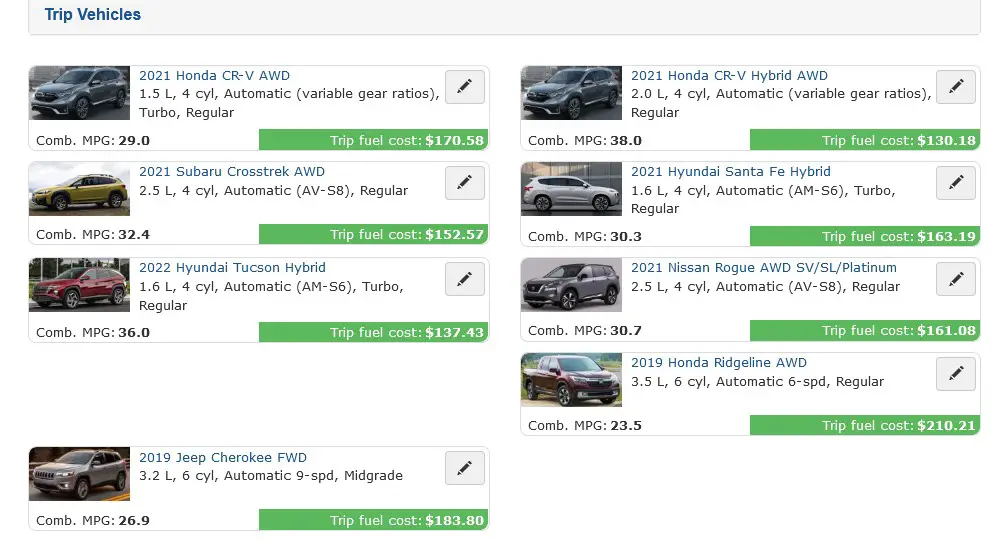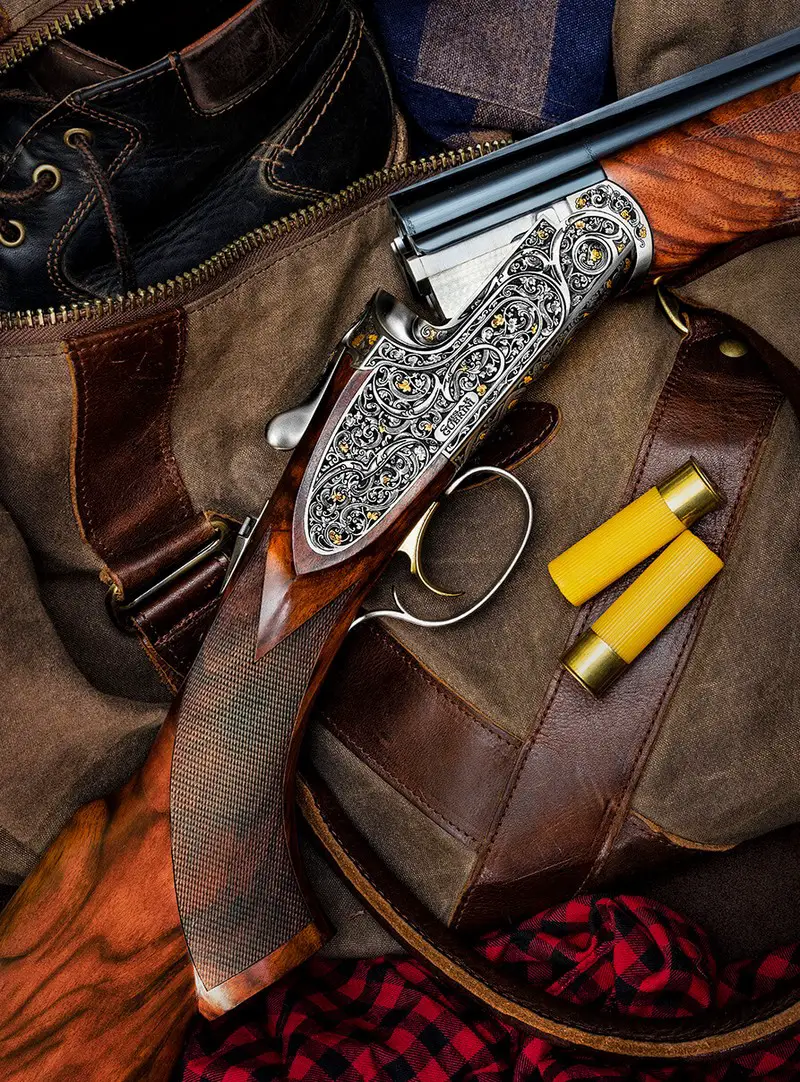Buy the Gun You Really Want!
Trip from Plainfield, IL to Las Vegas, Nevada
1,724 mi. About 1 day 1 hour (calculated using 15% city driving)

Of the eight vehicles compared, using the EPA suggested $2.87 / gallon fuel cost, the most expensive vehicle to take in terms of gasoline cost is the Honda Ridgeline AWD at $210.21. The most inexpensive vehicle is Honda CRV Hybrid AWD at $130.18 for a total difference of $80.03. My Ridgeline has truck plates on it and isn't a compact SUV, so it is an outlier in more ways than one. A more apt comparison is my 6 cylinder Cherokee to the thriftiest gasoline SUV, the smallish Subaru Crosstrek. The drive to Las Vegas difference in fuel cost is about $30. Compared to a gas-only Honda CRV, the difference is an underwhelming $13.22.
Let's take the same trip ten times, for 17,240 miles: a goodly annual mileage figure. The difference is $800.30. It doesn't take deep study to see that buying a new vehicle based on miles per gallon alone is illogical, considering the value of that new vehicle depreciates about 10% when you drive it off the lot and 20% after one year. The new Honda CRV Hybrid Touring is $36,350 not including tax, title, $1175 destination fee, and so forth. For it to be an economic winner, you would need to save far more than $7270 in that year: a virtual impossibility.
After 5 years, your new vehicle is worth about 40% of its initial value: only $14,540. To save over $21,000 in fuel costs over 5 years driving 17,240 miles per year isn't attainable. You might save $4000 if you keep up that above average driving, If gas prices fully doubled to $5.74 per gallon, you could get to $8000 over 5 years. That $21,000 is still not within reach advertised over 5 years. Nor is it within reach over 10 years, which is $8000 by today's gas prices. While the rate of depreciation slows after 5 years, it hardly ceases to exist. By then, your new CRV Hybrid has $172,400 miles on it, losing even more value due to that high mileage. Regardless of brand, including Hyundai, Kia, and Mitsubishi nothing remains under warranty at the 10 year point.
The rarely-generous U.S. Government currently allows 56 cents per mile driven for business use: freezing that 2021 rate is $96,544 to drive a vehicle 172,400 miles. According to AAA in 2018, the average person spends $8,849 per year for the privilege of driving a car. Note that the average vehicle on the road today is 11.9 years old, with 25% of all vehicles on the road at least 16 years old. With electric vehicles accounting for 2% of new car sales, it is clear that they won't be a large factor in the United States for the next dozen years, as 75% of current new vehicles won't age out for 12 years and they are being replaced by 98% internal combustion vehicles presently.
BUYING THE GUN YOU WANT

Over the next three to five years, you'll likely be buying a new smart phone, a flat-screen, and perhaps a laptop or desktop PC. The residual value of old electronics is minimal. Firearms do lose some value after the initial purchase, but after that they don't depreciate much if at all, nor do they quickly wear out. Hunting guns often don't wear out at all, except perhaps cosmetically. I have several forty-year old firearms (and some far older) that function as new, and I won't live to see the end of their usefulness.
The point of this windy missive is to attempt to point up why the cheapest gun and the gun of the best value do not come in the same box and why the gun that you have to buy twice to become satisfied is never a bargain. A firearm that gives you fifty years of enjoyment and usefulness is invariably a tremendous value not easily found in any other piece of hardware that you can carry and moves.
You've probably seen it yourself. An example would be the “deer rifle in a box” and other entry-level type firearms. You get the gun, you liked the price (at least at first), but then you want a better scope, bases, and rings. Later on, you want a better recoil pad. You might want a better trigger. Soon, you get tired of the tupperware stock, and want a more rigid fixture for your barreled action. Growing weary of the rough matte finish, you may end up with hydro-dip or Cerakote. As the adventure continues, it is easy to spend far more than if you got what you wanted initially. If may not grind at you the first year, but ten or twenty years later, you'll wonder what possessed you to go the Frankengun route in the first place, when you could have flown 1st Class for far less.
You can put a $3500 paint job on and add a leather interior to a Yugo, but it is still a Yugo. A friend of mine, who only owns extremely high quality firearms, often gets asked why. His answer, “I really can't afford to own cheap guns.” Years down the road, that rings truer and truer.







